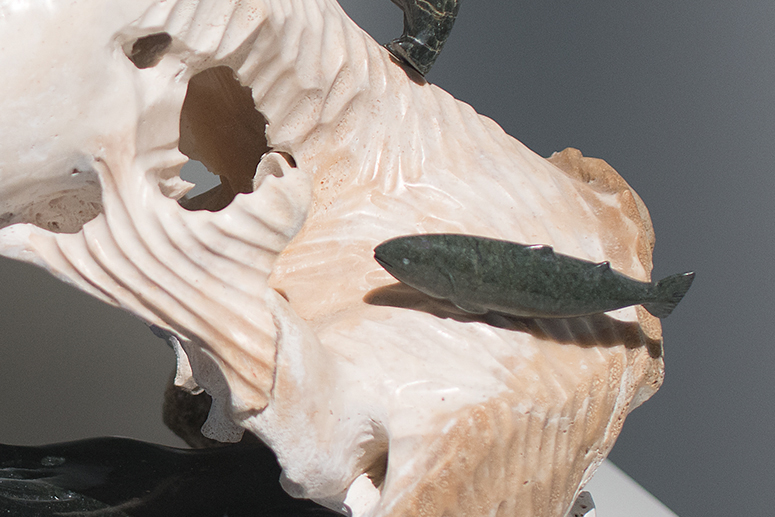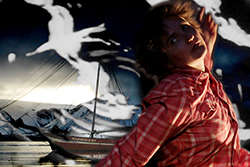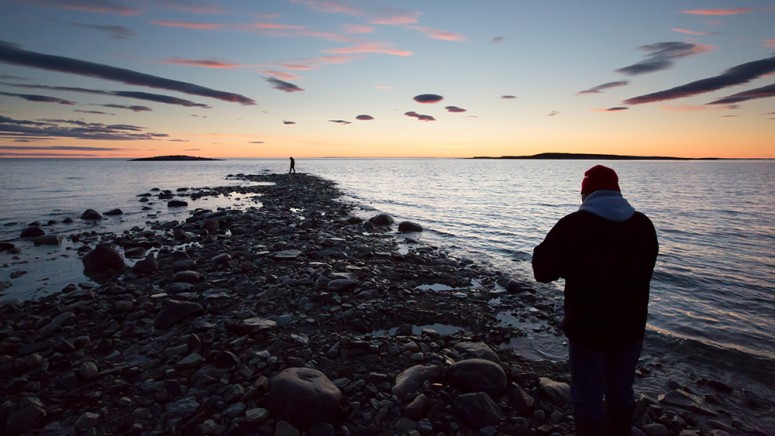Global Warming
Jaco Ishulutaq
Soapstone and walrus bone carving, 2010
Roloff Beny Gallery, ROM Level 4
Using media from the land — soapstone, bone and ivory — Ishulutaq’s carving explores global warming and its impacts on glaciers, ice, wildlife, and weather, while encouraging the cultures of the North and South to join hands in taking care of the environment and each other.
Loan, courtesy of Sylvain Cholette.
Jaco Ishulutaq
Jaco started carving at the age of sixteen, encouraged by his mother, and learning technique from his grandfather. He is equally comfortable carving antler, whalebone, ivory, and soapstone and has exhibited his works at museums and galleries locally and internationally. He is an active hunter and Canadian Ranger.
Inuit, Ice and Interconnections
Sheila Watt-Cloutier
Inuk Climate Change Advocate and Nobel Peace Prize Nominee
In the Arctic, we see the rapid impacts of a warming world, and that it challenges and threatens our human rights as indigenous people.
The foundation of our ancient culture is the cold, ice, and snow, and we are deeply tied to the natural environment. With climate change, hunting on the land is increasingly dangerous because of unpredictable conditions, which undermines our food security, health, and intergenerational transfer of cultural knowledge. Permafrost is melting and some Alaskan communities have had homes fall into the sea due to coastal erosion. Indeed, the Arctic is seen as a global barometer for climate change, and Inuit are responsible sentinels that have reached out to warn the world about this important issue that interconnects all of humanity.
















